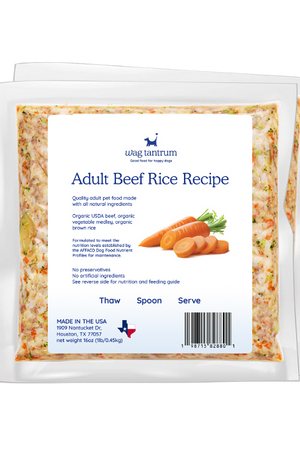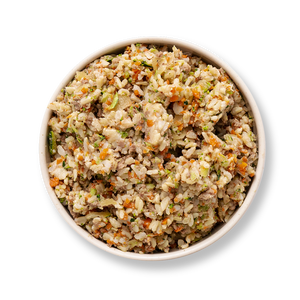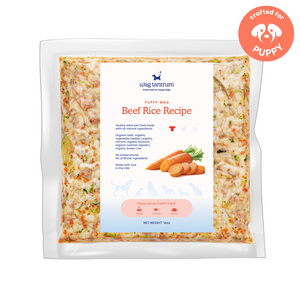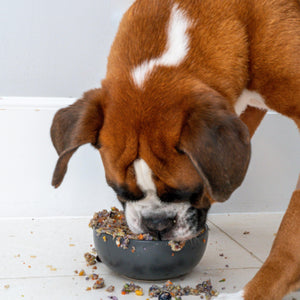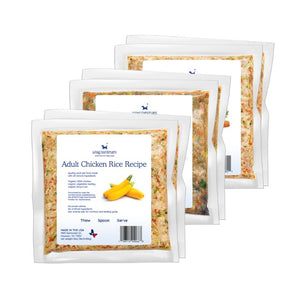6 Tips for Choosing the Perfect Dog Food
You’ll find many options when browsing online or in your local store for dog food. That might seem convenient, but just like human food, not all dog food is equally healthy. Of course, if you’re not a dog-expert, you likely don’t know the best tips for tracking down the best dog food. If you want your pup to live their best life, we’re here to help. Read our helpful list below to find a few essential tips for choosing the perfect dog food.
Read the Label
It’s easy to grab dog food off the shelf and assume it’s fine because it’s a name brand. However, choosing dog food requires a bit more care. Whenever you consider a type of dog food, read through the label to learn what’s inside; this is a simple step that will help you find the perfect diet for your pup.
Luckily, buying dog food online shouldn’t exempt you from finding a list of ingredients. For example, when you visit Wag Tantrum to order puppy food online, you can quickly find a detailed breakdown of the ingredients inside.
Of course, all this information begs the question: What should I be looking for on the label? It’s an understandable question because if you’re not knowledgeable in dog meal plans, you may not know how to sort right from wrong on the label. So let’s dive deeper into the best ingredients to look for on your dog food labels.
Always Go Organic
A very convenient aspect of dog diets is that many of the best vitamins and nutrients for dogs don’t differ drastically from what humans need in their meals. So don’t worry; you won’t have to learn a dictionary’s worth of new industry terms to find the right meal plan.
The best rule of thumb to use when buying dog food is prioritizing organic food over empty calories. Simply put, organic ingredients carry the nutrients and vitamins your dog’s immune system needs, unlike those empty calories that only provide filler for your dog’s bowl. For example, veggies including squash, broccoli, and carrots are welcome additions to your dog’s bowl. Broccoli might not be your favorite food, but it carries ample calcium, protein, potassium, fiber, and more valuable ingredients for your pup’s growth.
Organic beef and chicken are also excellent for dogs due to their high nutritional value, not the least of which is their healthy helpings of protein. Including protein in your dog’s bowl is particularly important because it aids in maintaining ideal muscle mass, fur quality, and skin condition. Protein even influences a dog’s dental health; the amino acids in protein protect your dog’s mouth from unhealthy bacteria buildup.
Monitor Your Dog’s Response
Your pup can’t exactly fill out a dog food feedback card, but you can visually identify whether they’re correctly responding to the ingredients. Thus, one of the best tips for choosing the perfect dog food is monitoring your dog’s progress. Over time, is your dog’s fur or skin starting to look worse? Are you noticing them vomiting or frequently avoiding their food? If so, then something in the meal plan just isn’t jiving with your dog’s body—but don’t freak out, because things like this happen. As we’ll detail later in this blog, the best solution to this problem is to reach out to your veterinarian.
Prioritize Proper Portions
A great dog meal doesn’t end after you make the purchase. After all, understanding portion control before putting the food in your dog’s bowl is critical. Unfortunately, obesity is a prominent problem in canines, yet it’s easily avoidable with the proper knowledge and prep. In other words, don’t overfeed.
Once again, we’re at another easy assumption: “I can put large portions in my dog’s bowl, and he’ll just stop eating when he’s full.” However, this situation isn’t so cut and dry, and assumptions such as these can lead to an overweight dog. To avoid this problem, feed puppies and adult dogs the food portions they need to remain healthy—nothing more, nothing less. If you’re unsure of the right quantities for your dog, consult with your vet so that you can properly consider all the unique details of your pup, such as age or size.
Contact Your Veterinarian
Speaking of consulting vets, that’s exactly what you should do if your carefully planned dog diet isn’t working out. So if your pooch isn’t reacting well to the new ingredients, it’s time to talk to your veterinarian as soon as possible. Thankfully, knowing the ingredients your dog is eating makes communicating with your vet much easier; the more details they know, the more they can help.
Next, you’ll consult with them on the next move for your dog’s new meal plan, which will feature many of the steps above but with your dog’s dietary restraints in mind. Another integral part of changing your dog’s diet is making gradual adjustments, so let’s break down how and why you should do this.
Make Adjustments Gradually
If you ever have to make adjustments to your dog’s meal plan, finding the perfect alternative can seem like a big task because it involves a precise feeding method. The purpose of this slow buildup to an entirely new meal plan is to help your dog’s body adjust in a healthy, fulfilling way.
Don’t worry; updating your pup’s diet won’t be a year-long trek. Instead, gradually changing meals will simply be a week-long endeavor. Introducing new food to your dog’s diet starts with filling a quarter of their bowl with the new food while the rest of the bowl contains their previous food. Day two will see an increase to about 40 percent new food and 60 percent old food. Next, day three will be 50-50 for both new and old ingredients. After day three, add 15 percent more new ingredients to the bowl every day until you totally phase out the old ingredients. If your dog’s body doesn’t agree with your new meal plan, consult your vet and try again with a new solution.
As you can see, finding the perfect doggy diet is far from impossible once you learn the essentials. Now that you have these tips under your belt, you can start feeding your pooch the nutrients they need to live their best life today.



